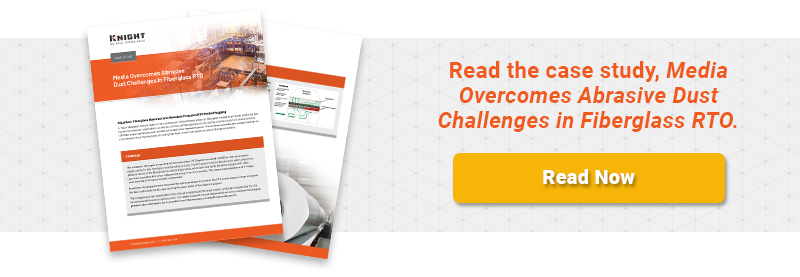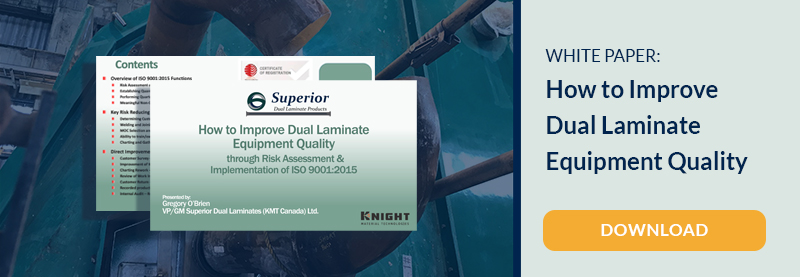Revolutionizing RTO Performance: How Advanced Structured Packing Delivers Superior Results
Published on: March 14, 2025 Topics: FLEXERAMIC ®, Heat Transfer Media, RTO, Structured PackingWith rising energy costs and tightening profit margins, manufacturing facilities are increasingly scrutinizing every aspect of their operations for potential savings and performance gains. Facilities equipped with a Regenerative Thermal Oxidizer (RTO) find that traditional ceramic media and tower internals often create a hidden drain on resources through excessive energy consumption and frequent maintenance cycles.
Knight Material Technologies’ innovative FLEXERAMIC® structured packing delivers remarkable results for major manufacturers, with one client slashing energy costs by more than over $1 million annually while also drastically reducing maintenance frequency from once every six months to once every two years. With each maintenance period stretching to a whole week, this maintenance schedule significantly impacts facility profitability.
The RTO challenge: plugging, channeling and rising costs
RTOs serve as critical abatement systems for industrial facilities, destroying volatile organic compounds (VOCs) and hazardous air pollutants (HAPs) from manufacturing processes by thermal destruction. These systems help facilities maintain compliance with Clean Air Act regulations by converting harmful emissions into carbon dioxide and water through thermal oxidation.
However, traditional RTO media, particularly monolith blocks and random ceramic saddles, frequently encounter two significant problems that compromise performance:
- Plugging from particulate matter: As exhaust air containing particulates flows through the RTO, these particles accumulate at the “cold face” (initial contact point between waste stream and ceramic media), restricting airflow and reducing available surface area.
- Channeling: When plugging becomes severe, the increased air velocity through remaining pathways can physically move or damage the media, further increasing pressure drop and reducing thermal destruction efficiency.
For many facilities, this means shutting down production lines every 3-6 months for burnouts, washouts or complete media replacement—a costly proposition in maintenance expenses and lost production time.
Real-world success: the FLEXERAMIC advantage
Fiberglass manufacturer:
The webinar highlights a compelling case study from a significant fiberglass manufacturer experiencing severe RTO issues. Abrasive fiberglass particles damaged the company’s traditional monolith media, requiring replacement every 3-6 months, with each maintenance cycle taking 4-5 days.
After switching to Knight Material Technologies’ FLEXERAMIC Type 28 structured packing, the manufacturer experienced the following:
- Extended media life from 3-6 months to 2-3 years (a 400% improvement)
- Significantly lower pressure drop, reducing electrical consumption
- Maintained high thermal efficiency over time, unlike monolith media, which rapidly degraded
- Improved distribution of airflow throughout the entire media bed, even when partial plugging occurred
hermal imaging comparisons between FLEXERAMIC and monolithic media demonstrated the superior mixing effect of the corrugated design. During testing, operators intentionally blocked 42% of the cold face, and the FLEXERAMIC media still distributed heat throughout the entire bed, while the monolith showed minimal heat distribution and clear channeling.
 Quantifiable ROI: thermal destruction energy savings worth millions
Quantifiable ROI: thermal destruction energy savings worth millions
The shift from traditional ceramic media to structured packing isn’t just about technical performance; it translates directly to bottom-line benefits. During the webinar, KMT emphasized how the superior air distribution and optimized thermal efficiency of FLEXERAMIC structured packing deliver measurable financial returns through multiple pathways.
These benefits compound to create impressive ROI figures across various facility sizes, as demonstrated by the following real-world examples.
Large packaging company – Replaced 10 feet of one-inch saddles with 8 feet of FLEXERAMIC Type 28, achieving:
- 60% lower pressure drop
- 50% reduction in electrical costs for exhaust fans
- More than $1.1 million in annual energy savings
- 2,000 cubic feet less ceramic material required
Small facility – Even a modest two-chamber RTO installation saw:
- Reduction from 8.5 feet of one-inch saddles to 6 feet of FLEXERAMIC media
- 60% lower pressure drop
- Approximately $80,000 annual energy savings
- 500 cubic feet less ceramic material needed
Is your RTO underperforming?
Many facilities operate RTOs inconspicuously, draining profits through inefficiency without realizing the full extent of the problem. During the webinar, KMT experts highlighted key performance indicators that signal when your RTO could benefit from an upgrade to FLEXERAMIC media:
- Steadily increasing natural gas consumption
- Rising electrical costs for exhaust fans
- Declining VOC destruction efficiency
- Frequent and costly maintenance interventions
- Production shutdowns for RTO repairs or cleanings
Learn more about optimizing your RTO performance
Access the complete webinar, Maximizing RTO Efficiency with Structured Ceramic Packing, to discover detailed technical specifications, view thermal imaging demonstrations and learn how to calculate potential savings for your specific application. Knight Material Technologies offers a comprehensive ROI calculator and engineering support to model your exact RTO parameters and identify optimization opportunities.




